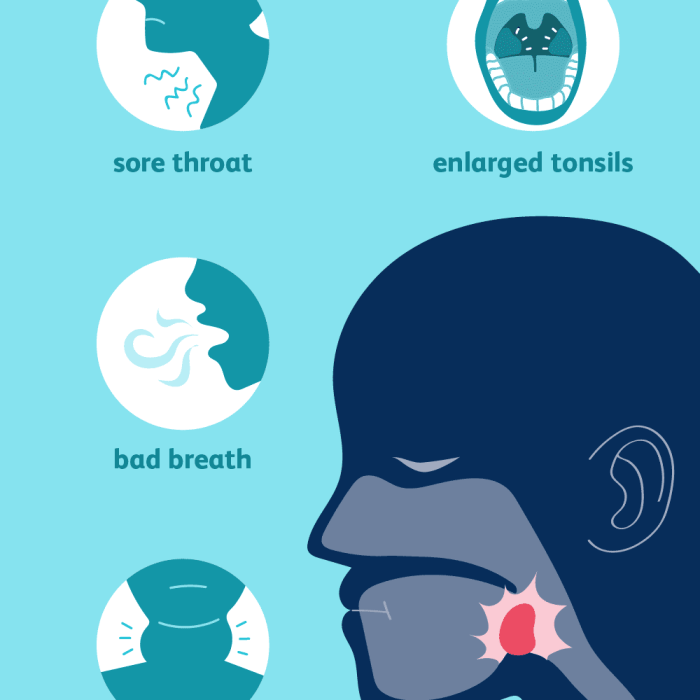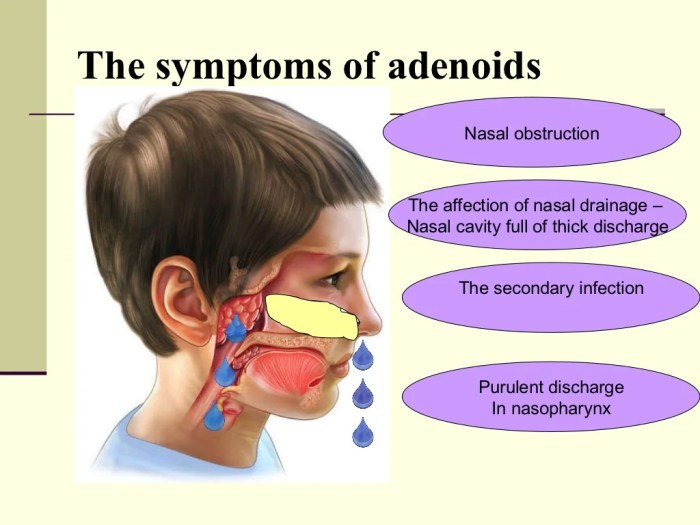Chronic and recurrent tonsillitis, a condition marked by persistent or frequent inflammation of the tonsils, can significantly impact a person’s quality of life. This blog post delves into the intricacies of this often misunderstood issue, exploring its definition, causes, diagnosis, management, and potential complications. We’ll examine the differences between acute, chronic, and recurrent tonsillitis, uncovering the key factors that contribute to its development and the various treatment options available.
Understanding the nuances of chronic and recurrent tonsillitis is crucial for effective management. We’ll analyze the possible causes, ranging from bacterial and viral infections to potential immune system dysfunctions and environmental influences. This will help you better understand the factors that increase your risk of developing this condition. The diagnostic process will be highlighted, as well as the various treatment options and their respective pros and cons.
Furthermore, we’ll examine the long-term prognosis, potential complications, and effective prevention strategies.
Defining Chronic and Recurrent Tonsillitis

Tonsillitis, inflammation of the tonsils, can manifest in various forms, each with distinct characteristics. Understanding these differences is crucial for accurate diagnosis and appropriate treatment. Chronic and recurrent tonsillitis differ significantly from acute tonsillitis in their duration and frequency of episodes. This section delves into the specifics of these conditions, their diagnostic criteria, and common symptoms.
Defining Chronic and Recurrent Tonsillitis
Chronic tonsillitis is characterized by persistent inflammation of the tonsils lasting for several months or even years. Recurrent tonsillitis, on the other hand, involves multiple episodes of acute tonsillitis over a period of time. Crucially, chronic tonsillitis represents a persistent condition, whereas recurrent tonsillitis involves recurring acute episodes. Acute tonsillitis, in contrast, is a relatively short-term inflammation that typically resolves within a few days.
Diagnostic criteria for these conditions often include a combination of symptoms and physical examination findings.
Diagnostic Criteria
The diagnostic criteria for chronic and recurrent tonsillitis involve evaluating the duration and frequency of symptoms. Chronic tonsillitis is diagnosed when symptoms persist for at least three months, while recurrent tonsillitis is diagnosed when there are at least three episodes of acute tonsillitis within a year. These conditions often manifest with characteristic symptoms, which help distinguish them from other illnesses.
Common Symptoms
Common symptoms associated with both chronic and recurrent tonsillitis include sore throat, difficulty swallowing, fever, headache, and swollen lymph nodes in the neck. The intensity and duration of these symptoms can vary, but they generally align with the underlying condition’s characteristics. For example, in chronic tonsillitis, symptoms may be less severe but persistent, whereas in recurrent tonsillitis, symptoms may fluctuate in intensity and frequency.
It’s important to differentiate these symptoms from those of other conditions like strep throat or allergies. The presence of purulent (pus-like) exudates on the tonsils is a key distinguishing feature.
Prevalence
The prevalence of chronic and recurrent tonsillitis can vary across different demographics. Factors such as age, geographic location, and overall health can influence the incidence of these conditions. Children and adolescents appear to be more susceptible to these forms of tonsillitis compared to adults, likely due to factors like exposure to infectious agents and immune system development. However, further research is needed to establish a definitive prevalence rate across diverse populations.
Comparison of Acute, Chronic, and Recurrent Tonsillitis
| Condition | Duration | Frequency | Symptoms |
|---|---|---|---|
| Acute Tonsillitis | Short (days) | Single episode | Sore throat, difficulty swallowing, fever, headache, swollen lymph nodes, pus on tonsils (often) |
| Chronic Tonsillitis | Long (months) | Ongoing | Persistent sore throat, difficulty swallowing, mild fever, swollen lymph nodes, possible halitosis (bad breath), pus on tonsils (sometimes) |
| Recurrent Tonsillitis | Multiple episodes | Frequent (3+ episodes/year) | Recurring episodes of sore throat, difficulty swallowing, fever, headache, swollen lymph nodes, pus on tonsils (often) |
Causes and Risk Factors

Chronic and recurrent tonsillitis, a persistent or frequent inflammation of the tonsils, isn’t always straightforward to pinpoint. Understanding its causes and risk factors is crucial for effective prevention and management. Numerous factors contribute to the development of this condition, often interacting in complex ways.A thorough understanding of these contributing elements allows for more targeted interventions and potentially better long-term outcomes.
This section will explore the possible culprits behind tonsillitis, including infections, lifestyle choices, and underlying health conditions.
Dealing with chronic and recurrent tonsillitis can be tough, impacting daily life significantly. While I’ve been researching this, I stumbled upon some fascinating connections between inflammatory bowel disease (IBD) and the risk of skin cancer, particularly concerning the link between chronic inflammation and the development of these conditions. Learning more about this complex relationship, like the information available at ibd and risk of skin cancer , helps me understand how various inflammatory conditions can potentially affect the body.
This, in turn, highlights the importance of managing chronic and recurrent tonsillitis effectively.
Bacterial Infections
Bacterial infections are a significant contributor to tonsillitis. Streptococcal bacteria, particularly Streptococcus pyogenes (group A strep), are frequently implicated. These bacteria produce toxins that trigger an inflammatory response in the tonsils, leading to swelling, pain, and difficulty swallowing. Prompt diagnosis and treatment with antibiotics are essential to prevent complications. Examples include strep throat, a common bacterial infection often associated with tonsillitis.
Viral Infections
Viral infections, such as those caused by rhinoviruses, adenoviruses, and influenza viruses, are another common trigger for tonsillitis. While viruses themselves don’t directly target the tonsils, the body’s immune response to the infection can lead to tonsil inflammation. Often, viral infections present with accompanying symptoms like a runny nose, cough, and fever, alongside the sore throat and tonsil swelling characteristic of tonsillitis.
Age
Age plays a role in susceptibility to tonsillitis. Children and adolescents are more prone to recurrent episodes due to their developing immune systems and increased exposure to pathogens. This heightened susceptibility often stems from a less mature immune response and frequent interactions with other children in school or daycare settings. This increased exposure to viral and bacterial pathogens is a significant factor in the high incidence rates of tonsillitis in children.
Dealing with chronic and recurrent tonsillitis can be a real drag, impacting everything from sleep to social life. While I’m no expert on getting rid of a pimple on your lip (check out this helpful guide how to get rid of a pimple on lip ), I can tell you that persistent sore throats and the constant need to clear your throat are no picnic either.
It’s all about finding solutions that work for you and your body, and for tonsillitis, that often means seeing a doctor.
Lifestyle Factors
Lifestyle factors can also influence the likelihood of developing tonsillitis. Poor hygiene practices, such as inadequate handwashing, can facilitate the spread of infectious agents. Exposure to secondhand smoke, a known irritant and immune system suppressant, can also increase susceptibility to tonsillitis and other respiratory infections. Furthermore, inadequate rest and stress can weaken the immune system, making individuals more vulnerable to infections.
Underlying Medical Conditions
Certain underlying medical conditions can increase the risk of chronic or recurrent tonsillitis. Immunodeficiency disorders, where the immune system is compromised, leave individuals more susceptible to infections, including those that lead to tonsillitis. Also, conditions that impair the body’s ability to fight off infections can contribute to the persistent inflammation associated with chronic tonsillitis. For example, individuals with weakened immune systems might experience more frequent and severe episodes of tonsillitis.
Immune System Dysfunction
Dysfunction within the immune system can significantly impact the development and persistence of tonsillitis. An overactive immune response, often triggered by viral or bacterial infections, can lead to chronic inflammation in the tonsils. Conversely, an underactive immune response can leave individuals more vulnerable to infections, increasing the risk of recurrent episodes of tonsillitis.
Environmental Factors
Environmental factors, such as exposure to allergens and pollutants, can indirectly influence the development of tonsillitis. Exposure to irritants in the air, such as pollen or smoke, can exacerbate existing inflammation and potentially trigger new episodes of tonsillitis. Furthermore, poor air quality or exposure to certain environmental toxins might weaken the immune system, increasing susceptibility to infections.
Comparison Table
| Factor | Possible Association | Explanation |
|---|---|---|
| Bacterial Infections | High | Bacterial infections, particularly Streptococcus pyogenes, are a major cause of tonsillitis, leading to inflammation and pain. |
| Viral Infections | Moderate | Viral infections can trigger an inflammatory response in the tonsils, contributing to tonsillitis. |
| Age | Moderate | Children and adolescents are more susceptible to recurrent tonsillitis due to developing immune systems and frequent exposure to pathogens. |
| Lifestyle Factors | Moderate | Poor hygiene, exposure to smoke, and inadequate rest can weaken the immune system, increasing susceptibility to tonsillitis. |
| Underlying Medical Conditions | High | Immunodeficiency disorders and other conditions that compromise the immune system can increase the risk of chronic or recurrent tonsillitis. |
| Immune System Dysfunction | High | Both overactive and underactive immune responses can contribute to persistent inflammation and recurrent episodes of tonsillitis. |
| Environmental Factors | Low to Moderate | Exposure to allergens and pollutants can exacerbate existing inflammation and weaken the immune system, indirectly increasing susceptibility. |
Diagnosis and Evaluation
Navigating the path to a proper diagnosis for chronic or recurrent tonsillitis involves a multi-faceted approach. A thorough evaluation, encompassing physical examination, diagnostic tests, and differential diagnosis, is crucial for accurately identifying the cause and developing an effective treatment plan. This process helps distinguish tonsillitis from other conditions with similar symptoms.The diagnostic journey typically begins with a detailed medical history, including the duration and frequency of symptoms, associated symptoms (e.g., fever, difficulty swallowing, earache), and any contributing factors.
This comprehensive information aids in narrowing down potential causes and guiding the diagnostic process.
Diagnostic Procedures, Chronic and recurrent tonsillitis
A physical examination of the throat and tonsils is the initial step. The physician assesses the size, appearance, and any signs of inflammation or infection, such as redness, swelling, or pus. This visual inspection provides valuable initial information about the potential presence of tonsillitis.
Throat Cultures
Throat cultures are performed to identify the specific bacteria or viruses causing the infection. A swab is taken from the back of the throat, and the sample is sent to a laboratory for analysis. This procedure helps determine the causative agent and guide the appropriate antibiotic treatment. If viral infection is suspected, cultures might be less informative.
Other Tests
Additional tests might be necessary to evaluate the extent of inflammation and rule out other conditions. These tests can include:
- Complete Blood Count (CBC): A CBC assesses the overall health of the blood and can reveal signs of infection, such as an elevated white blood cell count. This test provides insights into the body’s response to the infection.
- Rapid Strep Test: This quick test can help detect the presence of Streptococcus bacteria, a common cause of strep throat, which is often accompanied by tonsillitis.
- Monospot Test: Used to identify infectious mononucleosis, a viral infection that can present with similar symptoms to tonsillitis.
Differential Diagnosis
Accurate diagnosis hinges on differentiating tonsillitis from other conditions with similar symptoms. The differential diagnosis process considers alternative possibilities like:
- Other infections: Upper respiratory infections, including viral pharyngitis, can mimic tonsillitis.
- Allergies: Allergic reactions can lead to inflammation in the throat.
- Foreign bodies: Rarely, a foreign object lodged in the throat can cause symptoms similar to tonsillitis.
- Cancer: While less common, certain cancers of the head and neck can manifest with throat symptoms. This is an important consideration for persistent or worsening cases.
Imaging Techniques
Imaging techniques, such as X-rays or ultrasounds, are sometimes employed to assess the tonsils for complications or to evaluate for the presence of abscesses. Imaging might be used to identify potential structural abnormalities of the tonsils or any associated swelling or abscesses. For instance, an abscess behind the tonsil may require surgical drainage.
Chronic and recurrent tonsillitis can be a real drag, causing endless throat pain and discomfort. Sometimes, alongside the usual symptoms, you might notice some unusual white spots on your teeth. These could be a sign of a different underlying issue, potentially unrelated to your tonsils. However, it’s worth keeping in mind that ongoing issues with tonsillitis can sometimes lead to other oral health problems, so it’s crucial to keep an eye on any changes, and consult your doctor for proper diagnosis and treatment.
White spots on teeth can be a tricky thing to figure out, and could indicate a wider issue. Ultimately, staying on top of your overall health is key when dealing with chronic and recurrent tonsillitis.
Assessing Severity
The severity of chronic or recurrent tonsillitis is often evaluated based on:
- Frequency of episodes: The number of episodes of tonsillitis per year helps gauge the severity and potential need for treatment.
- Duration of symptoms: The length of each episode and the overall duration of the condition.
- Impact on daily life: The extent to which the symptoms affect the patient’s ability to perform daily tasks, attend school, or work.
Diagnostic Pathway
The following flowchart Artikels the typical diagnostic pathway for chronic or recurrent tonsillitis:
Start --> Physical Examination --> Throat Culture --> Imaging (if needed) --> Differential Diagnosis --> Diagnosis
Management and Treatment
Chronic and recurrent tonsillitis can significantly impact a person’s quality of life, leading to discomfort, pain, and potential complications. Effective management requires a multifaceted approach that addresses both the acute symptoms and the underlying causes. Treatment options range from medication to surgical interventions, and the best course of action depends on the individual’s specific situation and the severity of their condition.
A tailored treatment plan for tonsillitis considers the frequency and severity of episodes, the patient’s overall health, and the potential risks and benefits of different approaches. Proper management aims to alleviate symptoms, prevent complications, and ultimately improve the patient’s well-being.
Medication Management
Tonsillitis often responds well to medication, particularly during acute episodes. Analgesics like ibuprofen or acetaminophen can effectively reduce pain and fever. Throat lozenges and sprays containing local anesthetics can provide temporary relief from discomfort. In cases of bacterial tonsillitis, antibiotics are crucial to eliminate the infection. Examples include penicillin or amoxicillin, prescribed by a medical professional.
These medications address the underlying bacterial cause and help prevent further complications. However, antibiotics are not effective against viral infections.
Surgical Interventions
In cases where medication proves insufficient or recurrent episodes significantly impact daily life, tonsillectomy may be considered. This surgical procedure involves the removal of the tonsils. Tonsillectomy is typically reserved for individuals experiencing frequent and severe episodes of tonsillitis that negatively affect their health or well-being. It is a major procedure, and the decision to undergo it requires careful consideration of the potential benefits and risks.
Factors such as the patient’s overall health, age, and the potential for complications are all evaluated.
Supportive Care
Supportive care plays a vital role in managing tonsillitis symptoms and promoting recovery. Maintaining adequate hydration is essential, as it helps thin mucus and reduce throat irritation. A soft, bland diet that is easy to swallow is recommended during episodes of pain and discomfort. Rest is crucial for allowing the body to fight the infection or heal from surgery.
In cases of severe pain or difficulty swallowing, over-the-counter pain relievers or topical anesthetics can be used to minimize discomfort.
Lifestyle Modifications
Preventing recurrent episodes of tonsillitis often involves lifestyle modifications. Maintaining good oral hygiene is crucial. Proper dental care helps prevent infections that can trigger or worsen tonsillitis. Avoiding close contact with individuals who have respiratory infections can reduce the risk of contracting the infection. A healthy diet rich in vitamins and minerals can support the immune system, helping to fight off infections.
Smoking and exposure to secondhand smoke should be avoided, as they can weaken the immune system and increase the risk of infection.
Treatment Options Summary
| Treatment | Pros | Cons |
|---|---|---|
| Antibiotics | Effective against bacterial infections, potentially preventing complications. | Ineffective against viral infections, potential for side effects (allergies, antibiotic resistance). |
| Tonsillectomy | Potentially eradicates the source of recurrent infections, eliminates chronic pain and discomfort. | Major surgery with potential complications (bleeding, infection, scarring), recovery period can be lengthy. |
Complications and Prognosis: Chronic And Recurrent Tonsillitis
Chronic and recurrent tonsillitis, while often manageable, can lead to significant complications impacting a person’s overall well-being and quality of life. Understanding these potential issues and their impact is crucial for informed decision-making regarding treatment and management strategies. This section delves into the potential complications, long-term prognosis, and preventive measures associated with this condition.
Potential Complications
Chronic inflammation and infections in the tonsils can lead to various complications. These range from relatively minor issues to more serious conditions that require medical intervention. Proper management of tonsillitis is crucial to mitigate these risks.
- Airway Obstruction: Chronic inflammation can cause the tonsils to swell significantly, potentially obstructing the airway, particularly during sleep. This can lead to sleep apnea, characterized by pauses in breathing during sleep. A patient experiencing this might report snoring loudly, gasping for air, and feeling excessively tired despite adequate sleep. They might also experience difficulty concentrating during the day due to sleep deprivation.
- Peritonsillar Abscess: This serious complication involves the formation of a pus-filled collection of fluid and infection in the tissues surrounding the tonsils. The abscess can cause severe pain, difficulty swallowing, and a noticeable swelling in the neck. Patients often describe a sharp, throbbing pain in the throat that radiates to the ear, making it difficult to open their mouth.
They might have difficulty swallowing even liquids, and their voice might sound muffled or “hot potato” like.
- Ear Infections: The close proximity of the tonsils to the Eustachian tubes can increase the risk of ear infections. The infection can spread from the tonsils to the middle ear, causing pain, pressure, and hearing loss. This can be a recurring issue, affecting the patient’s daily activities.
- Difficulty Swallowing: The inflammation and swelling caused by tonsillitis can make swallowing food and liquids uncomfortable or painful. Patients might experience difficulty chewing and swallowing, even soft foods. They may avoid eating to avoid discomfort, leading to potential nutritional deficiencies. For example, a child might exhibit resistance to eating, affecting their growth and development.
Long-Term Prognosis
The long-term prognosis for individuals with chronic and recurrent tonsillitis depends largely on the severity of the condition, the effectiveness of treatment, and the individual’s overall health. Early and effective intervention can significantly improve the prognosis.
- Quality of Life Impact: Chronic tonsillitis can significantly impact an individual’s quality of life. The persistent pain, difficulty swallowing, and potential airway obstruction can lead to missed school or work, social isolation, and decreased participation in activities they enjoy. Patients may feel fatigued and experience decreased energy levels, affecting their ability to perform daily tasks. For example, a student might experience difficulty concentrating in class and struggle to keep up with their studies due to the pain and discomfort.
- Recurrence: Recurrence of tonsillitis is a possibility, even after treatment. This underscores the importance of preventative measures and diligent management of the condition.
Preventing Complications
Taking proactive steps to prevent complications can be vital for maintaining a good quality of life.
- Prompt Treatment: Early and appropriate treatment of tonsillitis is crucial to prevent complications. This involves seeking medical attention when experiencing symptoms and adhering to the prescribed treatment plan.
- Lifestyle Modifications: Maintaining good oral hygiene, avoiding irritants to the throat, and practicing proper hydration techniques can contribute to overall well-being and reduce the risk of complications. Avoiding allergens that may cause throat irritation can be helpful.
- Regular Check-ups: Regular check-ups with a healthcare professional can help identify potential complications early on. Regular monitoring can aid in the timely management of the condition and prevent further problems.
Impact on Daily Activities
Chronic and recurrent tonsillitis can significantly impact various aspects of daily life.
- Speech: Inflammation and swelling in the tonsils can affect the clarity and tone of speech. A patient might experience difficulty articulating words or having a muffled voice. They may also feel discomfort when speaking, which can lead to speech avoidance.
- Eating: The pain and difficulty swallowing associated with tonsillitis can significantly impact eating habits. Patients may avoid certain foods or develop picky eating habits to minimize discomfort. For example, a child might refuse to eat certain textures or foods, impacting their nutritional intake and overall health.
- Overall Well-being: The constant pain, discomfort, and potential for complications can take a toll on a person’s overall well-being. This can lead to fatigue, stress, and decreased enjoyment of daily activities.
Prevention Strategies
Preventing chronic and recurrent tonsillitis involves a multi-faceted approach focusing on strengthening the body’s defenses and avoiding triggers. A proactive strategy is crucial in minimizing the risk of repeated infections and associated discomfort. Maintaining good overall health plays a significant role in preventing tonsillitis, as a healthy immune system is better equipped to fight off infections.
Proactive measures can significantly reduce the frequency and severity of tonsillitis episodes. This includes understanding the factors contributing to the condition and implementing lifestyle changes that promote well-being. By implementing preventive strategies, individuals can experience a considerable improvement in their quality of life and reduce the need for invasive medical interventions.
Maintaining Good Oral Hygiene
Maintaining excellent oral hygiene is essential in preventing tonsillitis, as it helps control the bacteria and viruses that can cause infections in the throat. Proper brushing and flossing remove plaque and food particles that provide breeding grounds for microorganisms. Regular dental checkups are also crucial to address any potential oral health issues that could contribute to the development of tonsillitis.
This proactive approach can prevent the spread of infection from the mouth to the throat.
Importance of Overall Health
A strong immune system is a crucial defense against infections, including those that lead to tonsillitis. Adequate nutrition, sufficient sleep, and regular exercise are vital for maintaining a healthy immune response. Maintaining a balanced diet rich in fruits, vegetables, and lean proteins provides the necessary nutrients for immune function. Sufficient sleep allows the body to repair and rejuvenate, strengthening the immune system.
Regular physical activity boosts overall health and strengthens the immune system’s ability to fight off infections.
Role of Vaccinations
Vaccinations play a significant role in preventing infections that can trigger tonsillitis. Certain viral and bacterial infections are known to contribute to tonsillitis episodes. Vaccination against these pathogens can substantially reduce the risk of infection and, consequently, the likelihood of recurrent tonsillitis. For example, vaccines against influenza and other respiratory viruses can help prevent infections that can lead to tonsillitis.
Impact of Lifestyle Choices
Lifestyle choices significantly influence the risk of tonsillitis recurrence. Individuals who engage in regular physical activity and maintain a healthy weight often experience a stronger immune response. This is because exercise improves blood circulation and enhances immune function. Avoiding smoking and excessive alcohol consumption is also important, as these habits can weaken the immune system and increase susceptibility to infections.
Stress management techniques, such as meditation or yoga, can also help maintain overall health and a robust immune system.
Preventive Action Checklist
- Regular dental checkups: Regular dental checkups help maintain oral hygiene and identify potential problems early.
- Thorough oral hygiene: Brushing and flossing twice daily removes plaque and food particles, reducing the risk of infection.
- Balanced diet: Consuming a balanced diet rich in fruits, vegetables, and lean proteins provides essential nutrients for a healthy immune system.
- Adequate sleep: Aim for 7-8 hours of quality sleep each night to allow the body to repair and strengthen the immune system.
- Regular exercise: Engage in regular physical activity to improve blood circulation and boost the immune response.
- Stress management: Practice stress-reducing techniques like meditation or yoga to maintain overall health and a robust immune system.
- Avoid smoking and excessive alcohol consumption: These habits can weaken the immune system and increase the risk of infections.
- Vaccination against relevant pathogens: Vaccinations against viruses and bacteria known to cause tonsillitis can help prevent infections.
Closing Summary
In conclusion, chronic and recurrent tonsillitis, while often manageable, demands a thorough understanding of its various aspects. From recognizing the different types of tonsillitis to grasping the diagnostic process, treatment options, and potential complications, this comprehensive guide aims to equip you with the necessary knowledge to navigate this health concern. Remember, early detection and appropriate management are crucial in mitigating the impact of this condition on your overall well-being.




